Last Updated on January 6, 2026
How To Make Gin: A Distiller’s Guide
Learn Step-By-Step How To Make Your Own Homemade Gin
For this distilling guide, we’ll be showing you step-by-step, how to make gin from scratch.
***Before we get started. It is illegal to distill spirits at home. This guide is meant as a hypothetical walk-through. Mile Hi Distilling doesn’t condone any illegal or illicit behavior and cannot be held responsible for the actions taken by any individuals not acting within the parameters of the law.***
You can find all of the supplies, including moonshine still kits, you’ll need for distilling your own homemade gin in our shop. If you’re more of a rum drinker and distiller, then check out our guide on how to make rum.
Our team at Mile Hi Distilling, loves helping people who are passionate about spirits by providing top quality supplies and helpful how-to guides. You can make a great batch of gin with patience, attention to detail and by carefully following this guide. Be sure to plan thoroughly and execute carefully to get the most out of your distilling process.
Browse By Step. Click on any of these links to jump to the step you want to see:
A Quick Background on The History of Gin
Picking Your Gin Mash Ingredients
Making Your Gin Mash Recipe
Fermenting Your Gin Mash
Botanicals
Distilling Your Gin Mash
Collecting Your Gin Distillate
Diluting and Bottling Your Gin
Soaking Botanicals In Your Spirit
Conclusion
A Quick Background on The History of Gin
Sixteenth Century Netherlands
Modern-day Gin’s roots stretch all the way back to the sixteenth century in what we now call the Netherlands. Originally, the recreational juniper berry water was derived from distilled wine instead of grain. Experts have theorized that the onset of the “Little Ice Age” in the mid-sixteenth century may have caused this shift. The colder weather made harvesting grape plants much more difficult for farmers in Europe. Therefore the Dutch were unable to import the amount of wine necessary to create juniper berry water. The end result was to shift to a grain-based spirit.
This predecessor to the London dry style gin we know and love is called ‘genever,’ and it’s actually still made today. Generally, genever has a more malty flavor profile due to having a higher malt wine content than modern day dry gins. There are two basic categories of genever. Oude and Jonge. ‘Oude’, the older, more traditional style of genever, has a much higher malt wine content for its base (15%-50%), resulting in malty notes and a weightier flavor profile. Whereas ‘Jonge’, the newer style, utilizes less malt wine content (up to 15%), giving it a lighter flavor profile.
Introduced Into Great Britain
Genever and Gin became hugely popular in Great Britain in 1689, when William of Orange became the King of England. He hailed from the Netherlands and naturally drank genever. This had an influence on the rest of society in England who emulated the King’s behavior. Soon this social trend along with William’s legislation as King paved the way for Gin to become a very popular drink in England. He banned the importation of French Brandy when he declared war on France in May of 1689. He also passed the ‘Act For The Encouraging The Distilling Of Brandy And Spirits From Corn,’ making it very cost effective for the common people of England to distill their own gin. The overall result? A 400% increase in gin production in Britain.
If we flash forward to the nineteenth century, Genever was still widely consumed in taverns across the United States. It wasn’t until the emergence of the London Dry style, that gin really caught on with a majority of American drinkers. This new style, along with the British advent of the cocktail gave rise to popular mixed drinks such as the Manhattan, Martini, and the Tom Collins.
The Prohibition Days
Even with the soaring popularity of cocktails and mixed drinks across the country, the 18th amendment, passed in 1919, prohibited the production, sale, and distribution of any alcoholic spirits in the United States. Though the national prohibition of alcohol ended in 1933, the impact of the past legislation is felt even in recent years. Only in the last decade has there been a rebirth in craft distilling across the U.S.
With more and more distillers experimenting and creating their own style of gin, there has never been a better time for the modern-day cocktail connoisseur.
How To Make Gin at Downslope Distilling
Check out our how to make gin video walkthrough with Mitch from Downslope Distilling.

Picking Your Gin Mash Ingredients
A great gin starts with a great mash. Fortunately, gin’s base spirit can be made by fermenting and distilling almost any agricultural product. As a result, there are a ton of different variations of mash types to choose from when making gin. Most gins are made using a variety of grain such as corn, barley or wheat. Although, there are many exceptions to this as well. Distilleries have been known to use honey, molasses, apples, potatoes, grapes, carrots and many other ingredients in their gin mash bills.
For this walkthrough guide, we’ll be using wheat, rye, and malted barley for our gin mash ingredients. But feel free to use whatever ingredients you would like to for the first phase of distillation.
Making Your Gin Mash Recipe
Base Ingredients & Materials
- 5 Gallons of Water
- 7 Pounds Flaked Maize (Corn)
- 2 Pounds Wheat Malt
- 1 Pound Distiller’s Malt
- Turbo Yeast
- Brew Mash Pot
- Fermentation Bucket
- Heat Source
- Thermometer
- Long Spoon
Gin Mash Procedure
-
- Pour 5.5 gallons of water into your brew pot, and place on your heat source.
- Heat water to 165 °F.
- Turn off heat source when you reach 165 °F and immediately stir in 7 pounds of Flaked Maze (Corn) and 2 pounds of Wheat Malt.
- Stir the mixture continuously for 7 minutes.
- Check temperature and stir mixture for 30 seconds every 5 minutes until the temperature cools to 152 °F.
- When the mixture has cooled to 152 °F, stir in 1 pound of Crushed Distiller’s Malt.
- Check temperature and stir for 30 seconds every 20 minutes until the mixture has cooled to 70 °F. This process will take several hours on its own but can be sped up significantly with the use of an immersion cooler.
- When the mixture has cooled to 70 °F, add turbo yeast.
- Aerate the mixture by dumping it back and forth between two separate containers for 5 minutes.
- Pour the mixture into your fermentation bucket. We carry complete fermentation kits for these as well as the materials to produce your own. It is important to have the bucket, cap, and air-lock. A spigot will make for easier pouring.
Fermenting Your Gin Mash Water
Materials
- Iodine (Optional)
- pH Meter (Advanced)
- Siphon
- Cheese Cloth
- Citric Acid
- Hydrometer
Fermentation
Store your gin mash and let ferment for 1 to 2 weeks. Use the method below to ensure a successful fermentation phase.
Check Fermentation: After 1 week of fermentation, take a bit of liquid (no solids) from the top of your gin mash. Put the liquid on a white plate or lid. Drip several drops of iodine into the liquid.
If the liquid turns blue, this is because the iodine has reacted with starches still in your gin mash. This indicates that the mash still requires further fermentation. Repeat this process every few days until the fermentation stage is complete (no blue liquid). Once your fermentation produces alcohol, you can test the ABV (alcohol by volume) of the mix using a hydrometer. If you’ve never used a hydrometer, read out ‘How To Use a Hydrometer‘ guide.
Note: Discard your test sample. Do not add it back into your whiskey mash!
Straining Your Gin Mash Water
Siphon some mash water out of your mixture, leaving behind ALL solid material and sediments, and into a container to adjust pH. At this step, you should use a cheesecloth to strain your gin mash water. Leaving solid materials or sediment in your gin mash water will cause problems with the distillation phase.
(Advanced Tip!) Some distillers will add 2tsp of gypsum to their gin mash water at this point. They then test the pH of their mash water. The ideal pH is 5.8 to 6.0. Use citric acid to adjust the pH down and calcium carbonate to bring it up.
Gin Botanicals
This is where things get very exciting and experimental! Botanicals are the ingredients that set gin apart from other spirits like moonshine and vodka. The distilled spirit absorbs these gin botanicals while passing through the still’s column.
Every gin has a different blend of botanical ingredients. Some of the most popular gin botanicals that distillers prefer to use in their spirits include:
At Mile Hi Distilling, we carry a large selection of botanicals that you can use to make your own gin. Go with your own sensibilities here! Try different mixes and add in the botanicals that you prefer.
For this walkthrough guide, our botanical recipe includes:
- 15g of Juniper Berries (break them open using the pestle and mortar)
- 6g of Coriander Seeds (crush them in the pestle and mortar)
- 5g of Cardamom Seeds (crush them in the pestle and mortar)
- 2 Cinnamon Sticks (crush them in the pestle and mortar)
- 2g of Liquorice Root
- 2g of Angelica Root
- .5g of Orange Peel
Collect all of your botanical ingredients together and place them aside for now. We’ll be using them in the next step as you prepare for the distillation process.
Gin Botanicals
This is where things get very exciting and experimental! Botanicals are the ingredients that set gin apart from other spirits like moonshine and vodka. The distilled spirit absorbs these gin botanicals while passing through the still’s column.
Every gin has a different blend of botanical ingredients. Some of the most popular gin botanicals that distillers prefer to use in their spirits include:
At Mile Hi Distilling, we carry a large selection of botanicals that you can use to make your own gin. Go with your own sensibilities here! Try different mixes and add in the botanicals that you prefer.
For this walkthrough guide, our botanical recipe includes:
- 15g of Juniper Berries (break them open using the pestle and mortar)
- 6g of Coriander Seeds (crush them in the pestle and mortar)
- 5g of Cardamom Seeds (crush them in the pestle and mortar)
- 2 Cinnamon Sticks (crush them in the pestle and mortar)
- 2g of Liquorice Root
- 2g of Angelica Root
- .5g of Orange Peel
Collect all of your botanical ingredients together and place them aside for now. We’ll be using them in the next step as you prepare for the distillation process.
Distilling Your Fermented Gin Mash Water
Materials
- Still
- Still Burner
- Copper Packing
- Cheese Cloth
- Cleaning Products
- Easy Siphon
- Hydrometer
- Fermented and Strained Gin Mash Water
- Prepared Gin Botanicals
So far so good! You’ve done all of the work necessary to actually produce your own fermented gin mash water. Next, you’ll make your gin mash water a purer and concentrated spirit by distilling it. The distillation process removes undesirable contents from the gin mash water that you’ll need to separate out and dispose of. These include types alcohols such as acetaldehyde, acetone, and methanol. These undesirable alcohols can cause blindness if consumed.
Prepping and Cleaning Your Still
*DO NOT SKIP THIS STEP!
Unfortunately, because many people do skip the prepping and cleaning step, it causes their product to be subpar in the end. If you aim to maximize the quality of your distilled spirit, then it’s all about attention to detail. You’ll want to start on prep-work by cleaning your still. Below is a great walkthrough from our friends at Barley and Hops Brewing.
Even if you’ve cleaned the still after your last run, you will want to clean it again. If you’re just now learning how to make gin or any other spirit for that matter, now is the time to really emphasize this. Building good habits early on in your distilling routine is smart.
Adding Botanical Mix To Your Still Column
After you’ve cleaned your still thoroughly, you’ll need to add your botanical mix to your still column. For this, you will roll up about 20 inches of copper packing and insert it into the bottom section of your still’s column. Then wrap your crushed botanical mix into a folded piece of cheesecloth. Be sure to fold the sides of the cheesecloth upward to make a small satchel. Tie a string around the top of your small botanical satchel.
Lower your botanical cheesecloth satchel down the column onto the copper packing using the string. If you are using a still with a site glass section, clamp it below the section of your column with the copper packing.
If your still setup has a condenser, hook up your water input and output.
Next, you’re going to add your gin mash water into your still. We highly recommend using a siphon for this process. This method is the best way to reduce the amount of sediment from your fermented gin mash water getting into the still. Leaving particles and sediments in the mash water will cause the distillate to burn and ruin your product, so be diligent during this step.
Running Your Still
Now it’s time to fire up your still! Ensure that your still is properly set for this step. Secure all clamps and domes and make sure condensers are properly attached, as well as any hoses.
Next, you’ll turn on the heat source and start raising the temperature of your gin mash water. Slowly bring your temperature up to 150 °F. Once you reach 150 °F, turn on the condensing water, if your setup has a condenser.
After that, dial up your heat source to high until your still starts producing. Time your drips as they speed up until you reach 3 to 5 drips per second. Once you reach this rate, dial down your heat to maintain this drip rate (usually the “medium” setting).
Distilling gin is a fascinating process. If you’re not familiar with the science of the distillation process, here is a quick break down. Distilling separates different alcohol chemicals by taking advantage of different evaporation temperatures points between the chemicals.
The distilling process is not actually creating the alcohol itself. The alcohol was already created during the fermentation process. Distilling simply separates the different forms of alcohol from all of the other substances in your gin mash water. As a result, a purified and stronger spirit is created.
Collecting Your Gin Distillate
Collecting your gin distillate is where all of your hard work pays off. Being both a mixture of art and science, this process can be challenging for a new distiller. That being said, don’t let this deter you if you are a newcomer to distilling. After you run a few batches with your still, you’ll definitely be able to dial things in by taking notes and making the necessary changes. You know what they say. “Practice makes perfect.”

Foreshots
Do not consume this part of your gin run!
The first 5% of your gin run will consist of the foreshots. Foreshots contain methanol which is an extremely volatile and toxic alcohol. As a standard practice, a good rule of thumb is to throw out the first 250 ml per 5 gallons as this part of your run will consist of these foreshots. The foreshots can be recognized by their solvent smell.
Be sure to isolate the foreshots thoroughly and throw them out. Consuming methanol can cause an array of issues including blindness.
Heads
The next 30% percent of your gin run is known as the heads. Similar to the foreshots, the heads of your run are filled with volatile alcohols. One of the staples of the heads is a particularly volatile alcohol known as acetone.
Acetone has a distinct, solvent-like smell, making its identification pretty easy to recognize. Drinking your heads won’t make you blind but they will leave you with the worst hangover of your life.
Like your foreshots, you’ll want to isolate these and throw them out.
*Note a great way of isolating both the foreshots and heads in your run is to bring your still to around 168 °F and keep it there for around 10 minutes. The alcohol produced during this duration will consist of only foreshots and heads. Once the condenser stops producing at 168 °F, you’ll know that you’ve collected all of the foreshots and heads of the run.
Hearts
If you’re following along with this walkthrough guide, you have now officially gone from Googling “How to Make Gin” to actually making gin. Congrats! The next 30% of your run will be the sweet spot of your gin run, the hearts. You’ll want to raise the temperature of your still to 175 °F to 180 °F range to start collecting this portion of your distillate.
You’ll notice the solvent smell of acetone taper off and a sweet-smelling ethanol come forward in your run. This is where a skillful distiller really shines. Maximizing high-quality hearts is a game of senses. You can recognize the hearts by their sweet and neutral flavor. *only taste a bit of the distillate on your finger. It’s not time for shot glasses yet my friend.
By accurately identifying where the acetone stops and the ethanol begins, a distiller will maximize the number of high quality jars of product they collect. The main giveaways are the solvent smell of acetone and the sweet/smooth taste of ethanol.
Tails
The last 35% of your gin run will be the tails. You can recognize the tails by sight, smell and taste. You’ll see an oily film start to collect on the top of the distillate and be able to smell/taste a burnt type of flavor. The tails contain protein and carbohydrates from the wash that you don’t want in your final product. Some tails have esters and other bi-products that can refine the character of your spirit and can actually add nice flavor to it. Be precise with your cuts and use your smell and taste to see what you like and don’t like in them.
*Hold on to your tails and you can actually run them as their own wash in the future to pull out a bit more product.
Diluting and Bottling Your Gin
Materials
Now that you’ve collected all of your gin distillate, you’ll need to dilute and bottle your finished product. Dialing in the ABV (alcohol by volume) of your gin is important so you know the exact proof of every bottle that you produce. Generally, gin is defined as a spirit of no less than 40% ABV or 80 proof.
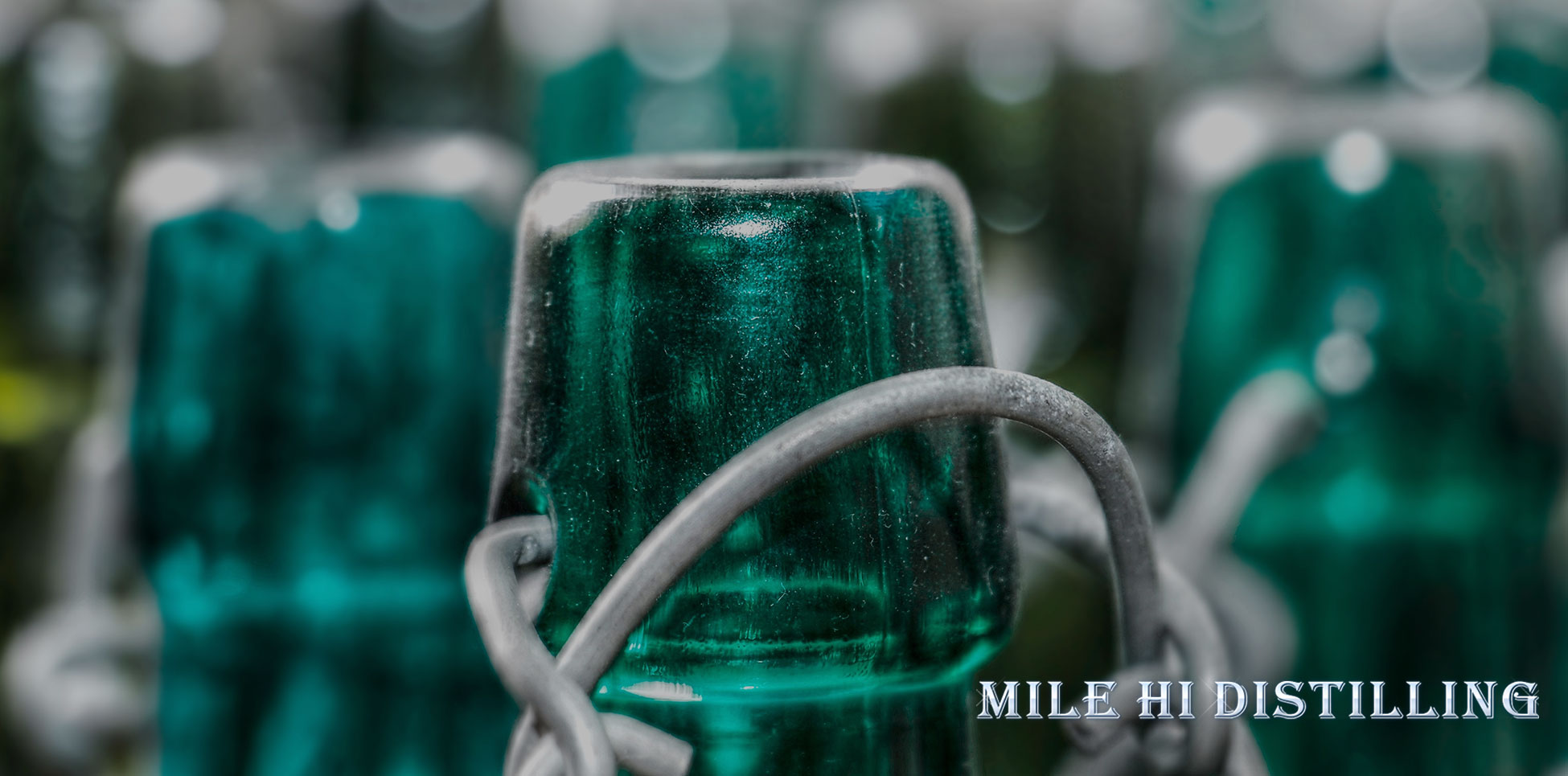
First, you’ll simply need to test the current ABV percentage of your gin distillate using your alcohol meter. Once you know the current alcohol content of your gin distillate, you can use this handy calculator to determine exactly how much water to add. Before you add any water to dilute your distillate, it’s important to note that you should NOT use tap water. You’ll want to use clean distilled water for this process.
Finally, after you’ve diluted your gin distillate to the goal for ABV percentage, you’ll need to bottle up your spirit. This is a fairly straightforward step in the process so we won’t cover this in detail.
*Don’t forget to label your bottles with the relevant information from your gin run (the date, ABV, etc..).
Soaking Botanicals In Your Spirit
Now at this point, you have officially distilled and bottled your own gin! Some distillers like to go a step further and soak specific botanicals in their finished product. This gives the option to add different flavor profiles to specific bottles of their gin.
You can do this by simply adding in other botanicals to your bottles of gin for a given length of time. For some popular gin distillers, their rule of thumb is 24-48 hours. But this is all about the flavor profile that you would like to achieve. *Note this will result in discoloration of your clear gin, but it will allow you to further experiment with different flavors. This step is completely optional.
Conclusion
Congratulations! You’ve just distilled your own homemade gin. We hope that this guide was helpful and you churned out a high-quality spirit. Now for the cleanup step. Be sure to wash all of your equipment thoroughly to ensure quality in the future. Be sure to disassemble your still and store it in a cool, dry place.
Thank you for visiting Mile Hi Distilling, your one stop shop for all of your distilling needs. Remember to stop by our shop for any distilling equipment or supplies that you may need for future runs.
If you enjoyed this guide on how to make gin, check out our other guides on how to make rye whiskey and how to make rum.
Let us know what you thought of our guide by leaving a comment or a star rating below.[kkstarratings]
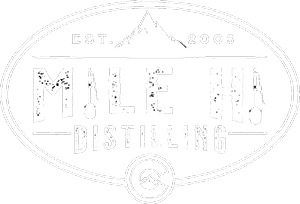

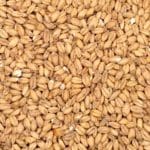
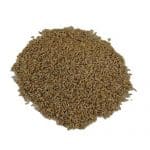







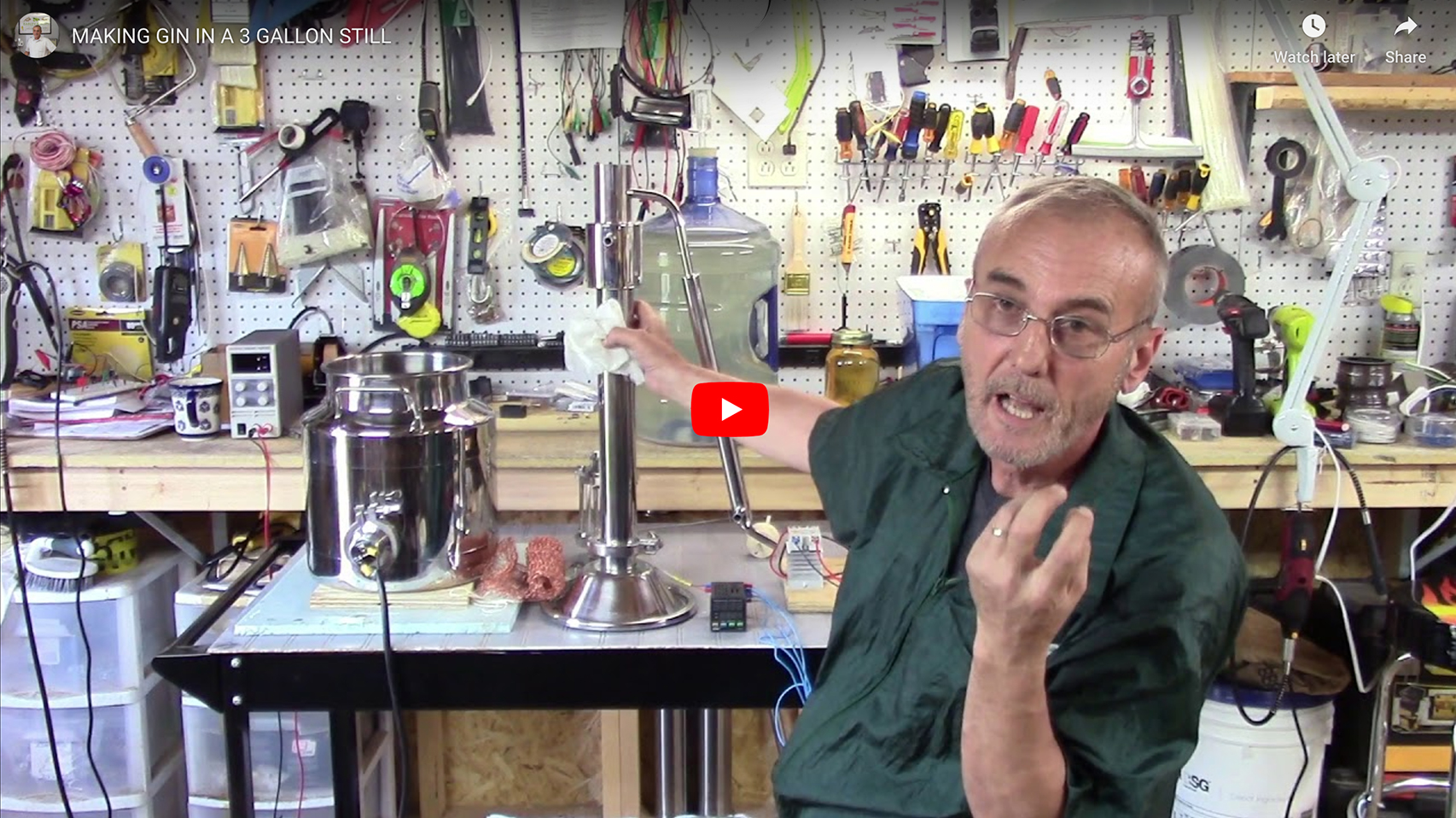
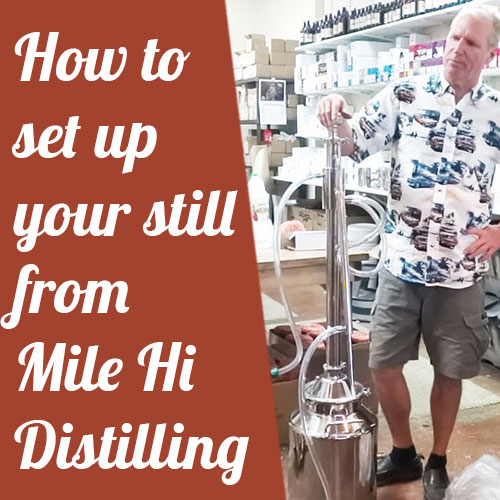

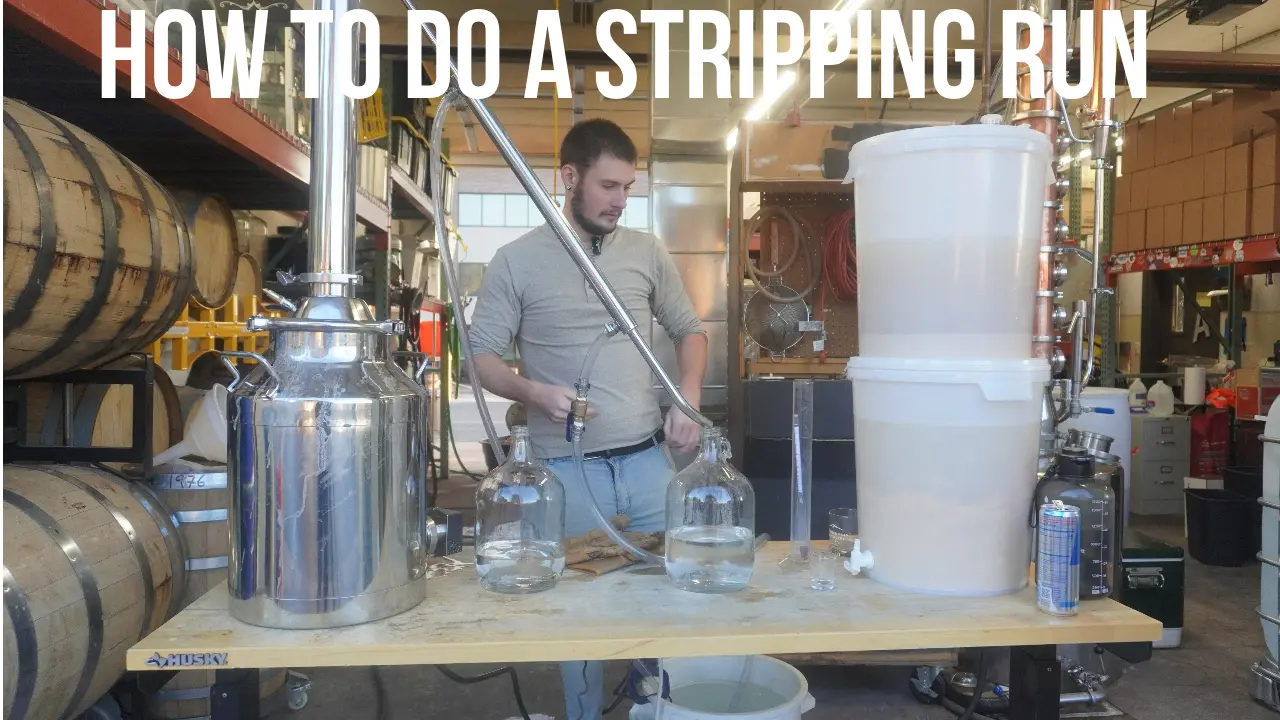
I am looking for a distillery that can product my gin can anyone please share some recommendations
Sent you an email, Iain!
I am looking for a distillery that can product my gin can anyone please share some recommendations
Sent you an email, Iain!
Hi, can You show me where to put/place the botanicals in the still Column?
Thanks,
Lars
Hi, Lars. It will change depending on the column you have but in a unit like this, it’s just the glass section: https://milehidistilling.com/oldsite/product/2-inch-diameter-stainless-steel-dual-purpose-pro-tower/
Hi, can You show me where to put/place the botanicals in the still Column?
Thanks,
Lars
Hi, Lars. It will change depending on the column you have but in a unit like this, it’s just the glass section: https://milehidistilling.com/product/2-inch-diameter-stainless-steel-dual-purpose-pro-tower/
It is not illegal where I live either, in the UK, Sipsmith took HMRC to court and won and allowed all small batch distillers to produce gin! This allows us to distill gin at home!
I also start with vodka which has the foreshots taken out already.
It is not illegal where I live either, in the UK, Sipsmith took HMRC to court and won and allowed all small batch distillers to produce gin! This allows us to distill gin at home!
I also start with vodka which has the foreshots taken out already.
Is there any Foreshots if i make gin from Vodka using pot still?
Is there any Foreshots if i make gin from Vodka using pot still?
do you know if commercial distilleries can use cane sugar and make a sugar wash as a base for GIN? It seems like it would be a cheaper way to test out botanical combinations at the very least. Are there any cons to using a sugar wash as a gin base?
do you know if commercial distilleries can use cane sugar and make a sugar wash as a base for GIN? It seems like it would be a cheaper way to test out botanical combinations at the very least. Are there any cons to using a sugar wash as a gin base?
I’m fascinated by the idea of making my own bespoke gin by playing around with various blends of botanicals, but I’m leery of the complexity and risk of making the ethanol from scratch. Is it reasonable to start with a good grade of vodka (or even Everclear) and re-distill at the proper temperature through the bed and botanicals to get a similar result?
I’m fascinated by the idea of making my own bespoke gin by playing around with various blends of botanicals, but I’m leery of the complexity and risk of making the ethanol from scratch. Is it reasonable to start with a good grade of vodka (or even Everclear) and re-distill at the proper temperature through the bed and botanicals to get a similar result?
An informative guide.
But please… Acetaldehyde isn’t an alcohol, it’s an aldehyde! (and the first breakdown product of ethanol by the liver – you smell this on people’s breath a while after they’ve been drinking.
Acetone isn’t an alcohol, it’s a ketone. Not very toxic, your body makes this from protein and you can smell the various ketones on people’s breath if they’ve been fasting a while.
An informative guide.
But please… Acetaldehyde isn’t an alcohol, it’s an aldehyde! (and the first breakdown product of ethanol by the liver – you smell this on people’s breath a while after they’ve been drinking.
Acetone isn’t an alcohol, it’s a ketone. Not very toxic, your body makes this from protein and you can smell the various ketones on people’s breath if they’ve been fasting a while.
Great read!
I am currently working on upscaling to doing a larger gin recipe, I have tried a few times and the flavors come out a bit muddled. Is there an equation for this? For example if I am distilling with 1 gallon and I go to 5 gallons would I do 5x the amount of Juniper I using for the 1 gallon mash?
Great read!
I am currently working on upscaling to doing a larger gin recipe, I have tried a few times and the flavors come out a bit muddled. Is there an equation for this? For example if I am distilling with 1 gallon and I go to 5 gallons would I do 5x the amount of Juniper I using for the 1 gallon mash?
Starch conversion to simple sugar by enzymes in the malt and fermentation by yeast are two very different things. Author confuses them. I would not recommend these instructions to a newbie.
Starch conversion to simple sugar by enzymes in the malt and fermentation by yeast are two very different things. Author confuses them. I would not recommend these instructions to a newbie.
thank you a lot for this guide it was very helfull and full of information and it really enlightns me
thank you a lot for this guide it was very helfull and full of information and it really enlightns me
Hey Dan,
Love your videos 🙂 Question ~ you said you added the juniper berries in the sack into the column after the methanol had been distilled off. So, to clarify, you take off the bung at the top and then add the botanicals on the string. Isn’t the top of the column pretty hot and if it’s still running doesn’t a lot of steam come out during this process? Never having done it I don’t want to get burned literally during the juniper berry addition.
I assume that if you add the juniper sack earlier then a lot of the desired flavors come off in the foreshots and methanol heads, which is a waste.
Russell
Hey Dan,
Love your videos 🙂 Question ~ you said you added the juniper berries in the sack into the column after the methanol had been distilled off. So, to clarify, you take off the bung at the top and then add the botanicals on the string. Isn’t the top of the column pretty hot and if it’s still running doesn’t a lot of steam come out during this process? Never having done it I don’t want to get burned literally during the juniper berry addition.
I assume that if you add the juniper sack earlier then a lot of the desired flavors come off in the foreshots and methanol heads, which is a waste.
Russell
Does anyone know what the starting gravity on this mash should be? I got around 1.060 thanks.
Does anyone know what the starting gravity on this mash should be? I got around 1.060 thanks.
Dont know who you are or where you got your information but you might want to change your disclaimer it is not illegal to distill spirits at home or too possess them it is only illegal to sell them without going through the proper channels
It is illegal to distill in most countries buddy, lucky for you if its not in yours
It’s not illegal to make home brew in the UK, I foraged some plums in the wood brought them home washed them, cut and halved them, put them in a jar. Covered the plums with 300grms of sugar, cheap supermarket vodka and a cup of water, shaken every day, makes a beautiful rich liqueur
But you are not distilling – using a still in the UK is illegal without a license.
Spirits Duty – GOV.UK (www.gov.uk)
Dont know who you are or where you got your information but you might want to change your disclaimer it is not illegal to distill spirits at home or too possess them it is only illegal to sell them without going through the proper channels
It is illegal to distill in most countries buddy, lucky for you if its not in yours
It’s not illegal to make home brew in the UK, I foraged some plums in the wood brought them home washed them, cut and halved them, put them in a jar. Covered the plums with 300grms of sugar, cheap supermarket vodka and a cup of water, shaken every day, makes a beautiful rich liqueur
But you are not distilling – using a still in the UK is illegal without a license.
Spirits Duty – GOV.UK (www.gov.uk)
Hi am I right in saying there’s a mistake here as in using iodine at the end of the fermentation. Should it not be used at the end of cooking the mash as a way of proving all the starches have turned into fermentable sugars.
I had the same same question, iodine should prove saccarification(sp) during the mash phase. Plus, everything else I’ve ever read says to adjust the pH BEFORE fermentation. Please explain.
Hi am I right in saying there’s a mistake here as in using iodine at the end of the fermentation. Should it not be used at the end of cooking the mash as a way of proving all the starches have turned into fermentable sugars.
I had the same same question, iodine should prove saccarification(sp) during the mash phase. Plus, everything else I’ve ever read says to adjust the pH BEFORE fermentation. Please explain.
Hi,
looking for some advice please.
I am completely new to any form of home home brewing/distilling.
My wife and I love Gin and I want to start making my own.
Can you tell me what equipment i will need, the complete set up from start to finish.
I have liked on several sites online but yours is the clearest and easiest to understand.
Thanks,
Andy
Hi,
looking for some advice please.
I am completely new to any form of home home brewing/distilling.
My wife and I love Gin and I want to start making my own.
Can you tell me what equipment i will need, the complete set up from start to finish.
I have liked on several sites online but yours is the clearest and easiest to understand.
Thanks,
Andy
its not illegal where I live (aotearoa – new zealand)
the last free place on earth
its not illegal where I live (aotearoa – new zealand)
the last free place on earth
Can one re use juniper berries after infusion, do they still have flavour
No you shouldn’t be able to re-use juniper berries you’ve already used for infusion. Most of the flavor would have been given to the gin during the first infusion. They’re pretty cheap anyway so you should use new berries for any additional infusions.
Can one re use juniper berries after infusion, do they still have flavour
No you shouldn’t be able to re-use juniper berries you’ve already used for infusion. Most of the flavor would have been given to the gin during the first infusion. They’re pretty cheap anyway so you should use new berries for any additional infusions.
Question, when taking 5% off as the foreshots per 5 gal, is the 5 gal what you have in the still? 2nd, when holding at 168 degrees at 10 minutes, is this the kettle temp or the temp at the top of the column. Thanks
mvaldrow – It’s unlikely you’ll be getting 5 gal of output. However in metric 5 gal is about 19 litres and I would expect you to take approx 200ml from the output, which is about 1% of the starting volume. Regarding the temp, this is head temp (top of column).
Question, when taking 5% off as the foreshots per 5 gal, is the 5 gal what you have in the still? 2nd, when holding at 168 degrees at 10 minutes, is this the kettle temp or the temp at the top of the column. Thanks
mvaldrow – It’s unlikely you’ll be getting 5 gal of output. However in metric 5 gal is about 19 litres and I would expect you to take approx 200ml from the output, which is about 1% of the starting volume. Regarding the temp, this is head temp (top of column).
I have amazing success with making simple vodka first, filtering it, cutting to 40%, put it back in a cleaned boiler, Drop botanicals in the 40%, let sit for 24 hours. Change the packing of the Tower to 1inch marbles and some copper mesh and run the still with the botanicals still in the boiler. Set aside the first 50 mil then run the whole thing into a glass vessel cut to 40%, bottle and shelf for 2 weeks.
This simple method produces Gin so smooth and crisp you can drink it straight on a 2 inch ice cube with a squeeze of lime.
Enjoy!
Note 1 – I have never used distilled water but rather a 10 stage Anchor Filter using city water.
Note 2 – I have noticed that water and Alcohol will separate if let to sit in warm conditions if you don’t add Glycerin. Since I don’t add anything to my spirits I have a tag on the bottle that tells the drinker to shake vigorously for 10 seconds then serve.
But your millage might very.
I have amazing success with making simple vodka first, filtering it, cutting to 40%, put it back in a cleaned boiler, Drop botanicals in the 40%, let sit for 24 hours. Change the packing of the Tower to 1inch marbles and some copper mesh and run the still with the botanicals still in the boiler. Set aside the first 50 mil then run the whole thing into a glass vessel cut to 40%, bottle and shelf for 2 weeks.
This simple method produces Gin so smooth and crisp you can drink it straight on a 2 inch ice cube with a squeeze of lime.
Enjoy!
Note 1 – I have never used distilled water but rather a 10 stage Anchor Filter using city water.
Note 2 – I have noticed that water and Alcohol will separate if let to sit in warm conditions if you don’t add Glycerin. Since I don’t add anything to my spirits I have a tag on the bottle that tells the drinker to shake vigorously for 10 seconds then serve.
But your millage might very.